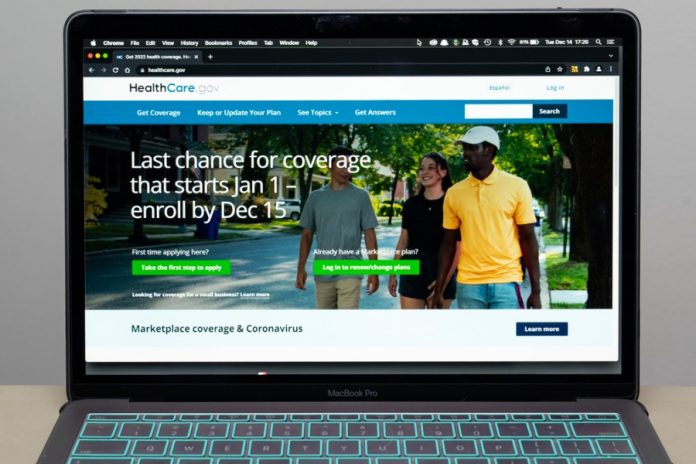
The controversy over the 2010 Affordable Care Act dominated Barack Obama’s presidency. The implementation of ObamaCare caused health insurance premiums to soar and nearly collapsed the market entirely. The Biden administration responded by flooding the system with expanded federal subsidies, which are set to expire at the end of 2025.
To stop premiums for older workers with pre-existing conditions from suddenly leaping by $10,000, Republicans will need to extend part of this additional funding. But in return, they should insist on reforms to allow healthy Americans to purchase better value insurance with their own money.
The Affordable Care Act required health insurers to cover individuals with pre-existing conditions at the same price as enrollees who signed up before they got sick. As a result, premiums more than doubled, millions of healthy enrollees dropped coverage and many insurers abandoned the market.
The Affordable Care Act kept the individual health insurance market from falling apart completely by providing subsidies to low-income enrollees. But individuals earning more than $62,600 in 2025 would have faced full premiums without any assistance.
Those unsubsidized enrollees felt the full pain of the Affordable Care Act’s premium hikes. The legislation allows insurers to charge older enrollees up to three times what they do the youngest, and so unsubsidized premiums for near-retirees can be huge. This year, the benchmark unsubsidized premium for a 61-year-old individual in Washington, D.C., is $15,402 per year.
Rather than fix ObamaCare’s structure, the newly-elected Democratic Congress in 2021 threw money at the problem with the American Rescue Plan Act. By expanding eligibility for subsidies to higher earners, the act reduced the cost of health insurance for a 61-year-old earning $70,000 from $15,402 to $5,950 — with federal taxpayers covering the difference. That legislation also expanded the generosity of subsidies for lower earners. Those earning $22,000, who would have contributed $756 to the cost of insurance under the original Affordable Care Act, would get it entirely paid for by the federal government.
This approach has been hugely expensive. In May 2022, the Congressional Budget Office estimated that subsidies for the Affordable Care Act would cost $67 billion in 2024. Last June, following a renewal of the American Rescue Plan Act’s increased subsidies, the Congressional Budget Office’s revised cost estimate for 2024 surged to $129 billion.
A recent Paragon Institute report found that this leap in cost owed much to a surge in enrollment among those who received coverage free of charge. Paragon estimated that such enrollees accounted for nearly half of new enrollment, and that 5 million people may have misreported their income to claim free coverage, costing taxpayers an additional $20 billion.
Insurers eagerly welcomed the influx of new healthy enrollees, who had not deemed it worth purchasing insurance from the individual market until the federal government paid the entire price. Such newcomers proved enormously lucrative, as they used less medical care than existing enrollees but generated the same revenue. Democrats, who received twice as much in campaign contributions as Republicans from Blue Cross Blue Shield in 2024, eagerly boasted about reducing the number of uninsured Americans, with little concern for the cost.
The expiry of the American Rescue Plan Act subsidies is now looming again, set to expire at the end of 2025. It will be up to a Republican president and Republican-led Congress to find a way forward.
Fiscal conservatives have little appetite to pay for renewing all the expanded ObamaCare subsidies. But nor will they feel comfortable letting the American Rescue Plan Act’s enhanced subsidies expire entirely, as this would result in a $10,000-per-year premium hike on thousands of middle-income near-retirees.
Congress should focus on targeted support by eliminating the cap on eligibility for the Affordable Care Act’s original subsidies, which limit premiums at 9.5 percent of income, to avoid a sudden benefit cliff for those with incomes just above $62,600. But they should also let other expansions of subsidies expire.
In return, Republicans should insist that Americans be allowed to obtain discounted premiums if they purchase insurance before they get sick. In 2017, President Trump allowed Americans to do this by purchasing short-term insurance. However, in 2024, the Biden administration limited the duration of these plans to four months. This came following pressure from big insurers, who claimed that allowing the expansion of such plans would prevent them from cross-subsidizing enrollees with pre-existing conditions by overcharging those who signed up while healthy.
In reality, the restriction of these affordable plans has served mostly to inflate insurers’ profits. Healthy enrollees remain able to purchase short-term plans afresh every few months; it is only those who subsequently become sick who are deprived of coverage. Regulatory protections for the long-term coverage of enrollees in non-ObamaCare plans should be strengthened; not weakened.
Furthermore, with the extension of the American Rescue Plan Act’s premium cap, federal subsidies taxpayers directly subsidize most enrollees. It is therefore unnecessary to also prohibit healthy enrollees from obtaining insurance plans which offer long-term coverage at good value for their money.
Chris Pope is a senior fellow at the Manhattan Institute.

